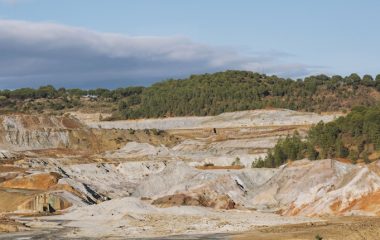
Photo: Bishnu Sarangi from Pixabay
WindEurope called upon the European Commission to propose a ban on landfilling decommissioned wind turbine blades by 2025 and vowed to work on recycling solutions. The market and technology for reusing fiberglass are still undeveloped.
A number of large players in the wind turbine sector recently announced ambitious plans for the recycling of blades and the conversion to energy or useful material. Furthermore, WindEurope said the European Commission should facilitate a ban by 2025 on landfilling the components, for which there are currently few viable alternatives, and that it would contribute to solutions that would enable a 100% recovery.
The industry group claims the ban would further accelerate the development of sustainable recycling technologies for composite materials. It also promised not to send decommissioned blades from Europe to other countries for landfilling.
Blades are from composite material, so getting components out is massive undertaking
Austria, Finland, Germany, and the Netherlands already have a landfill ban in place. WindEurope’s Chief Executive Officer Giles Dickson suggested to the European Commission to propose a harmonized European approach.
The standard lifetime of an onshore wind farm is 20 to 25 years and 85% to 90% of the total mass of a wind turbine can already be recycled. Blades are the biggest challenge.
Making solutions for blades commercially viable will require commitment from policymakers, other composite users and the recycling industry
There are technologies available to recycle the composite materials in blades, and an increasing number of companies offer composite recycling services, but these solutions are not yet mature enough, widely available at industrial scale or cost-competitive. Making these technologies commercially viable will require commitment from policymakers, other composite users and the recycling industry, WindEurope said.
“Wind turbine blades are non-toxic and landfill safe but we believe landfilling is a waste of valuable resources,” says Juan Virgilio Márquez, General Manager of Asociación Empresarial Eólica (AEE), Spanish wind power association.
Wind blade waste to grow exponentially
In Europe’s most mature markets for wind energy, the first turbines are reaching the end of their operational life. The number of blades that have been decommissioned so far remains low. But it will increase over the coming years. WindEurope expects around 25,000 tons of blades to reach the end of their operational life annually by 2025 and to grow to 52,000 tons by 2030.
Mechanical grinding and pyrolysis are the most mature technologies at the moment to recycle wind turbine blades. The material is a combination of a polymer matrix and reinforcement fibres (usually glass or carbon fibres). Composites like fiberglass are important in the automotive industry, marine transport, aeronautics, leisure and sports equipment, construction and other sectors.
Fiberglass can be cut into pellets and boards or it can be mixed into cement
Cement coprocessing is another tested and available measure to treat composite waste in the coming years. The technology avoids landfilling and makes the cement industry more resource-efficient. Some of the components are added to cement. Others can be burned, though the process results in pollutant emissions.
Fiberglass from the wind blades can also be cut into boards. Even with a variety of options, another obstacle in the ambition to completely recycle the turbine elements is the small size of the market for the products.
Partnerships springing up
Vestas vowed early last year to produce zero-waste wind turbines by 2040 and recently it announced a breakthrough in processing in cooperation with scientific institutions. In April, offshore wind developer Aker from Norway and the University of Strathclyde from Scotland revealed they are working on a recycling project.
General Electric has established partnerships with Veolia North America (VNA), Neowa from Germany and cement giant LafargeHolcim. Ørsted, the biggest energy company in Denmark, said this month that it would “reuse, recycle, or recover” all its blades.


















Be the first one to comment on this article.